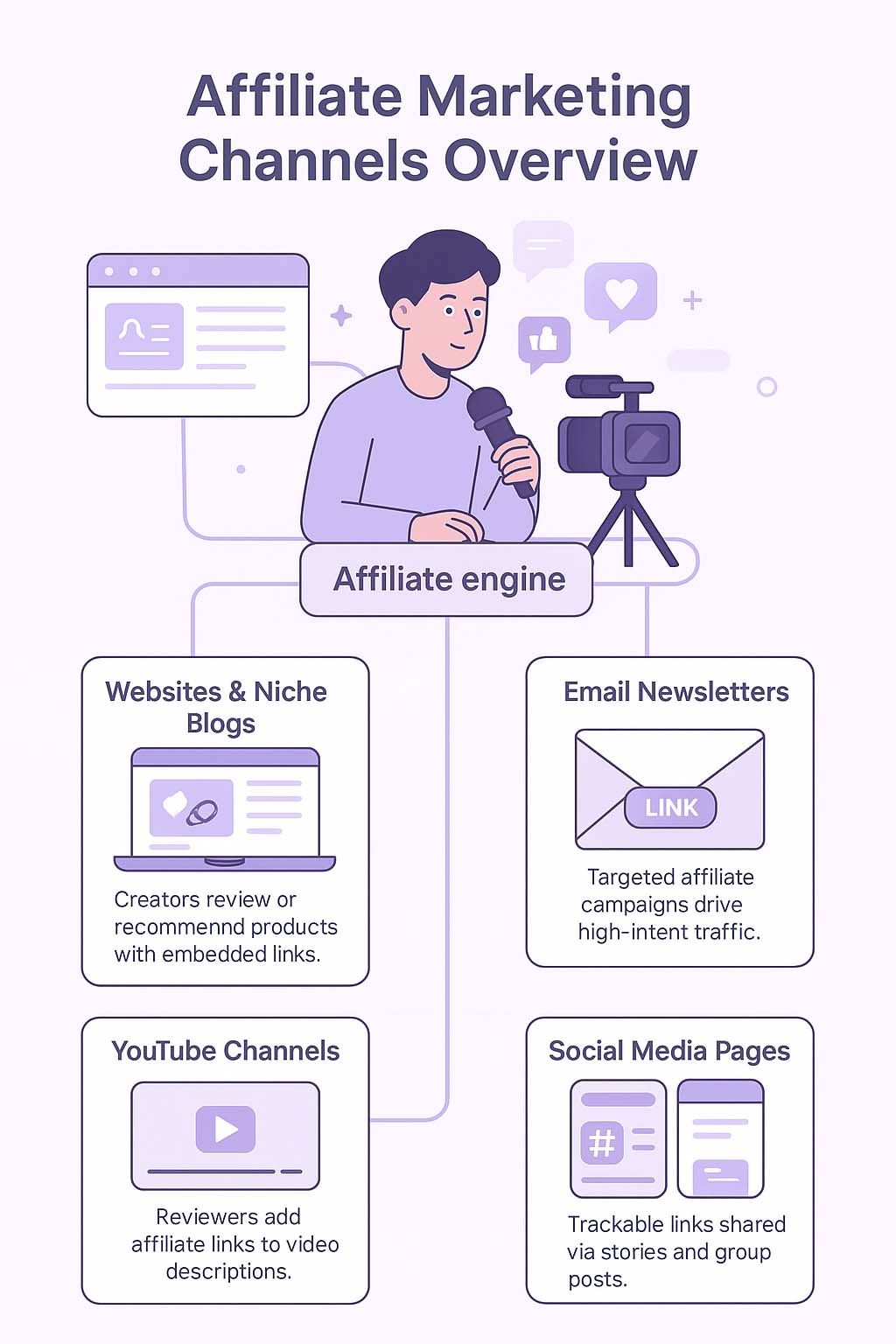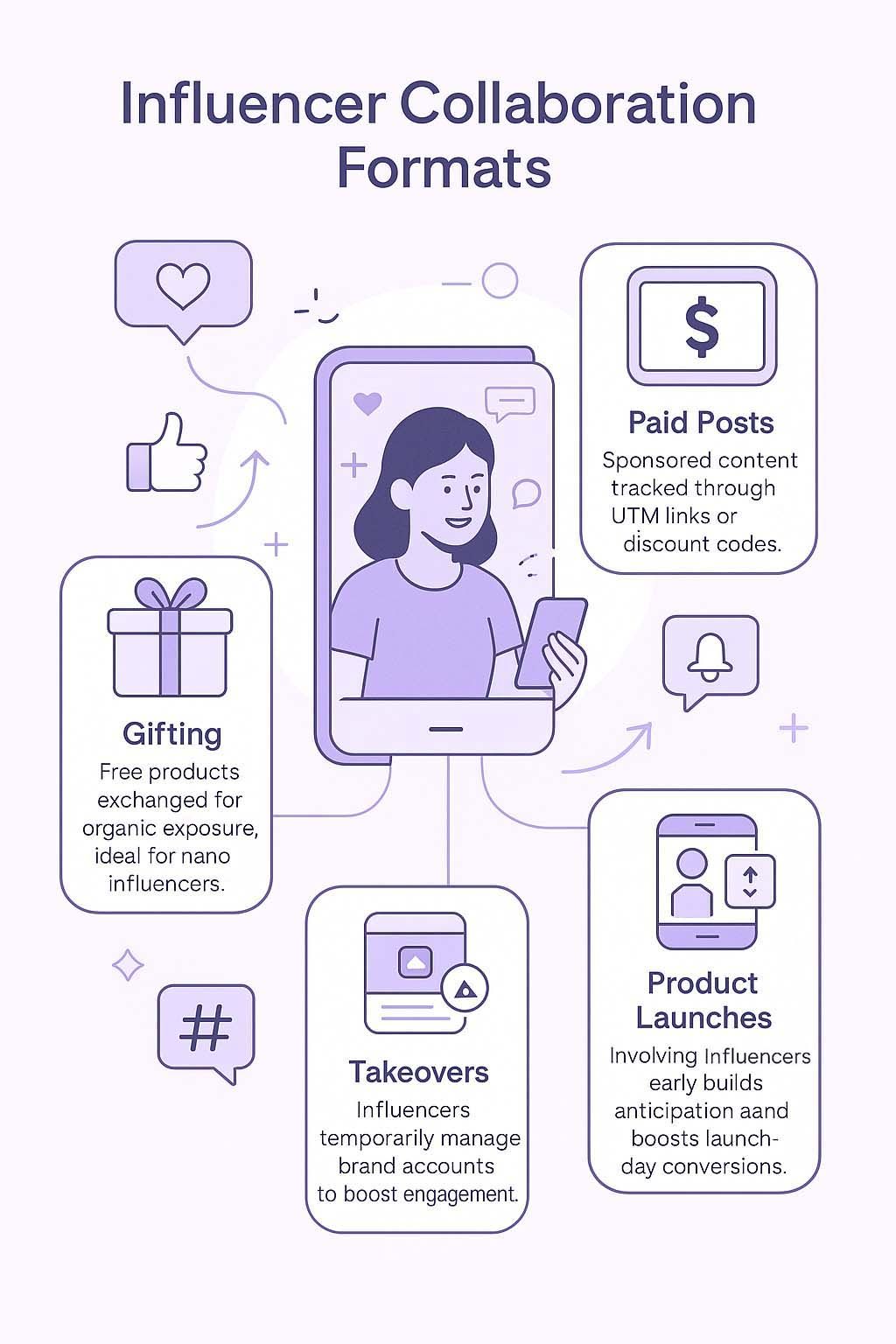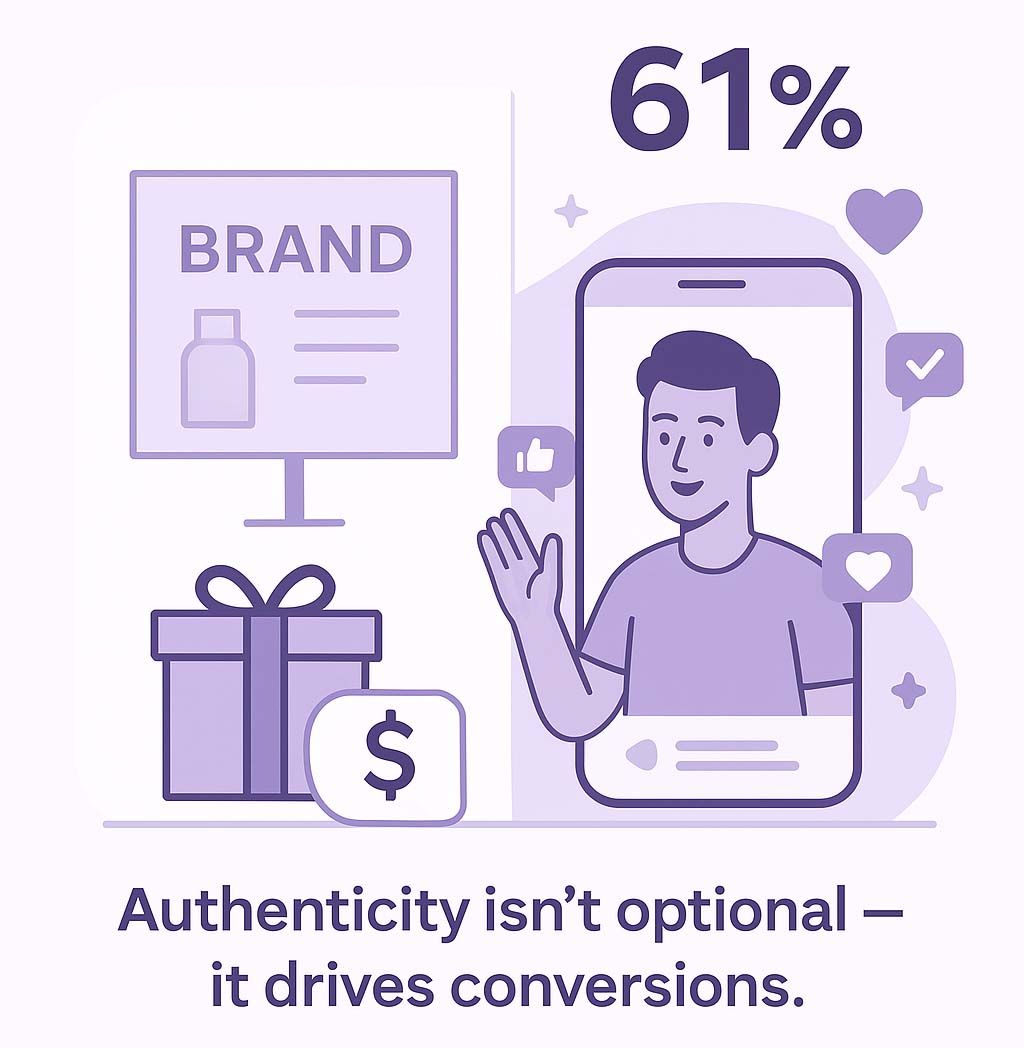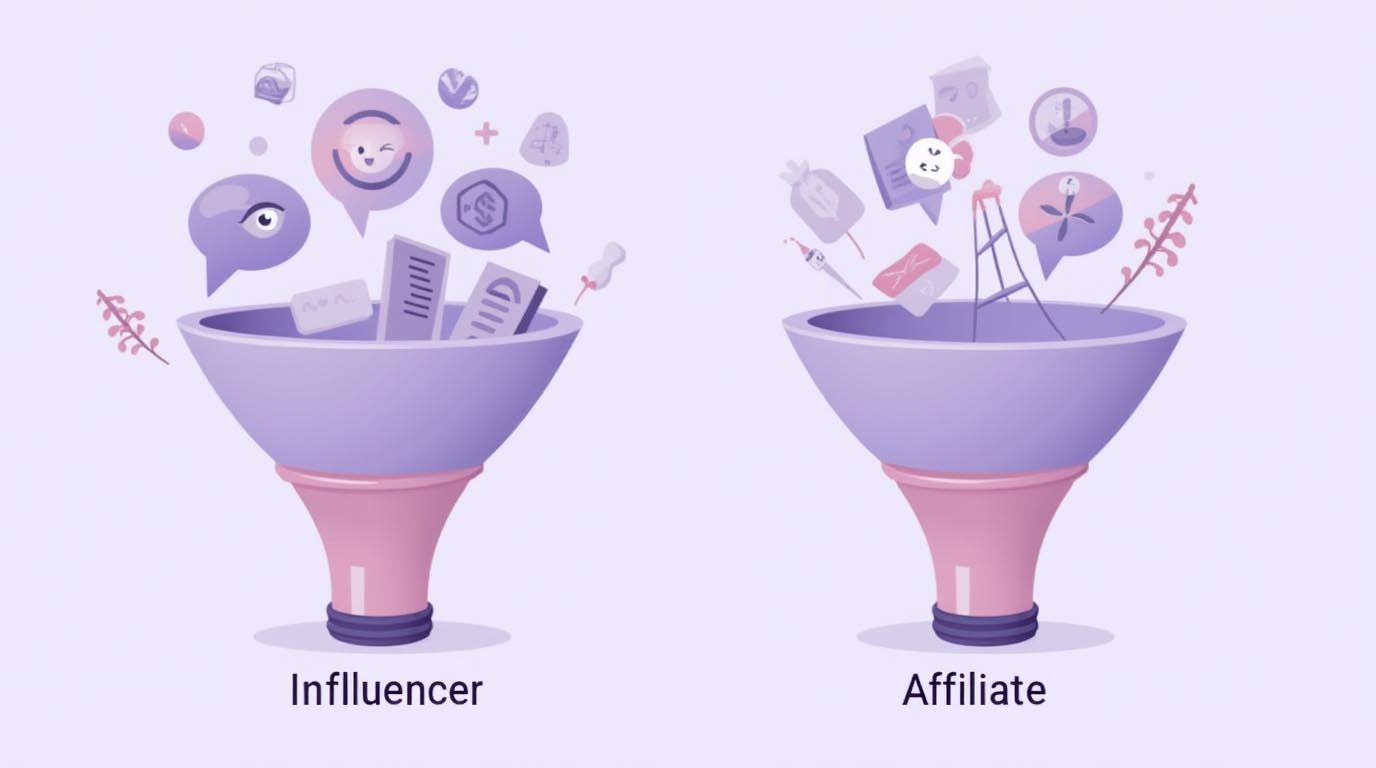Difference Between Affiliate Marketing and Influencer Marketing

Choosing between affiliate and influencer marketing depends on your brand’s goals, audience, and performance tracking needs. While both strategies help drive visibility and sales, they operate under distinct models. Businesses often combine them to maximize reach and conversion, especially in industries where trust and niche appeal matter.
What is Affiliate Marketing?
Affiliate marketing is a performance-based digital strategy where individuals or publishers promote a brand’s products or services through tracked links and earn a commission for each sale, lead, or action generated. It relies on measurable outcomes and is widely used across ecommerce, SaaS, and content-driven platforms.
This strategy revolves around performance-based partnerships. Brands collaborate with individuals or publishers (affiliates) who promote products or services using tracked links. These links attribute sales, clicks, or leads to the affiliate, who earns a commission based on agreed terms.
Affiliate marketing typically happens on third-party platforms that manage tracking, reporting, and payments. Some brands run their programs in-house, while others use established networks like ShareASale, CJ Affiliate, or Impact. The appeal lies in its clear ROI model — marketers only pay for measurable results.
Affiliate Marketing Channels Overview
Affiliates operate across various digital spaces, allowing brands to scale campaigns with low upfront costs:

-
Websites and Niche Blogs: Content creators review or recommend products with embedded links.
-
Email Newsletters: Targeted campaigns built around affiliate links drive high-intent traffic.
-
YouTube Channels: Reviewers and tutorial creators often include affiliate links in video descriptions.
-
Social Media Pages: Facebook groups and Instagram stories can also serve as affiliate-friendly zones, especially with trackable short links.
Each channel caters to a different audience behavior, so choosing the right one aligns closely with product type and buyer journey.
Common Affiliate Models
Understanding affiliate payment models is crucial for ROI control:
-
CPA (Cost Per Action): The brand pays when a user completes a specific action (e.g., filling out a form).
-
CPS (Cost Per Sale): Commission is earned only when a sale is made — ideal for ecommerce-focused businesses.
-
CPL (Cost Per Lead): Best suited for services like insurance or SaaS, where lead generation is the primary goal.
Each model aligns differently with funnel stages. CPS works well for transactional campaigns, while CPL supports longer sales cycles.
Examples of Affiliate Partnerships in Action
-
Fashion: ASOS and Nordstrom use style bloggers with affiliate links to move seasonal collections quickly.
-
Tech: Software companies like Adobe often rely on comparison sites and tutorial creators to recommend subscriptions through CPS models.
-
Fitness: Gymshark uses influencers who double as affiliates, earning commissions on product sales via trackable codes shared in YouTube workouts or Instagram bios.
These cases show how affiliate strategies adapt based on product value, customer journey length, and platform compatibility.
What is Influencer Marketing?
Influencer marketing is a collaborative strategy where brands partner with individuals who have established credibility and followings on social media to promote products or services through authentic, engaging content. It focuses on trust, reach, and audience alignment rather than direct performance alone.
This strategy centers around personal connection and brand alignment. Influencers — individuals with dedicated followings — promote products through storytelling, lifestyle integration, or expert commentary. Brands typically partner with influencers on a campaign basis, measuring success through reach, engagement, and conversions.
The influencer marketing model is flexible: it can focus on awareness or direct sales, with success hinging on audience fit and content quality.
Types of Influencers by Reach
-
Nano (1K–10K followers): High trust, ideal for niche targeting and local businesses.
-
Micro (10K–100K): Strong engagement rates and cost-effective campaigns for brands with specific demographics.
-
Macro (100K–1M): Wider reach with decent engagement; suitable for mid-sized product launches.
-
Mega (1M+ followers): Best for brand visibility but requires higher budgets and careful ROI tracking.
Campaign performance doesn’t always scale with follower count. Data shows that micro influencers often outperform mega creators on engagement metrics.
Influencer Collaboration Formats
Influencer collaborations vary based on brand goals and budgets:

-
Gifting: Sending free products in exchange for organic exposure (common with nano influencers).
-
Paid Posts: Sponsored content with specific deliverables, often tracked via UTM links or codes.
-
Takeovers: Influencers manage a brand’s account for a day to boost visibility and build authenticity.
-
Product Launches: Involving influencers early to build anticipation and drive conversions at launch.
These formats work best when content feels authentic and relevant to the influencer’s niche.
How Influencer Credibility Affects Conversions
Trust drives performance in influencer marketing. Audiences follow creators for their opinions, not for ads. When influencer content aligns naturally with their persona, engagement and conversion rates rise.
Case in point: A beauty brand partnering with a skincare-focused creator with a track record of honest reviews often sees stronger ROI than with a general lifestyle account. Authenticity — validated by follower interaction and content quality — remains a deciding factor in campaign success.

Data suggests that 61% of consumers trust influencer recommendations more than brand messaging (Edelman Trust Barometer). That’s why authenticity is not just a nice-to-have — it's a conversion driver.
Marketing Difference Between Affiliate and Influencer Methods

Though often aligned under digital partnership strategies, affiliate and influencer marketing serve distinct functions within a campaign funnel. The difference lies not only in how compensation works, but also in their impact on user intent, conversion timelines, and content ownership.
What is the Difference Between an Affiliate and an Influencer?
Affiliates typically operate as third-party publishers who promote products using tracked links to earn commissions. Their focus is performance — clicks, leads, or sales.
Influencers, on the other hand, shape perception through branded content. They’re compensated for their voice and visibility, often independently of direct conversions. While affiliates prioritize monetizable action, influencers build emotional connection and trust — often as the first touchpoint in a buyer’s journey.
Audience Behavior and Intent
Affiliate campaigns usually target warm leads: users actively searching for reviews, comparisons, or discounts. These users are already in the consideration or decision stage.
Influencer campaigns address earlier-stage intent. Audiences aren’t always shopping — they’re scrolling for content. However, a trusted influencer’s endorsement can introduce new products and spark curiosity. The path to purchase may be longer but can still be highly effective, especially in lifestyle and consumer goods sectors.
Revenue Models Comparison
Influencer marketing often operates on a flat-fee model: brands pay upfront for content creation, reach, or engagement. While hybrid deals exist (adding bonuses for performance), compensation isn’t strictly tied to sales.
Affiliate marketing is inherently performance-based. Affiliates earn only when a desired action is completed. This makes it budget-friendly for brands focused on measurable ROI.
Both models carry risk and reward. Influencer campaigns may lead to unpredictable conversions, while affiliate programs can struggle without strong brand awareness upstream.
Brand Control Over Content and Messaging
In affiliate campaigns, content creation is usually left to the publisher. Brands can set guidelines but have limited control once links go live.
Influencer partnerships often involve more collaboration. Marketers approve scripts, visuals, and captions — ensuring brand alignment and legal compliance (e.g., FTC disclosures). This balance between creative freedom and structured oversight shapes campaign tone and consistency.
For regulated industries like finance or healthcare, this level of content oversight is critical.
Similarities Between Affiliate and Influencer Marketing
Despite operational differences, both strategies rely on digital platforms, content-driven engagement, and audience trust. Their shared foundation makes them compatible for integrated campaigns — especially when performance metrics and targeting align.
ROI Measurement Techniques – Key KPIs for Both Models
Both approaches require robust tracking to assess impact. Common KPIs include:
-
Click-through rate (CTR)
-
Conversion rate
-
Cost per acquisition (CPA)
-
Return on ad spend (ROAS)
-
Engagement rate (for influencer-specific campaigns)
Influencer marketing may also include softer metrics like brand sentiment and reach, while affiliate reporting zeroes in on direct outcomes.
Shared Marketing Tools and Platforms
Marketers use similar tools to track campaign performance across both models:
-
Affiliate networks like Rakuten or Awin offer dashboards for commission tracking.
-
UTM parameters and shortened URLs (e.g., Bitly) help monitor influencer campaigns.
-
Analytics dashboards like Google Analytics or Impact.com centralize conversion and behavior tracking.
These tools enable marketers to optimize in real time, identifying top-performing content and scaling effective partnerships.
Role of Trust and Niche Relevance
Whether it's an affiliate blogger reviewing tech gadgets or a fitness influencer demoing new gear, audience trust is the backbone of both strategies.
Consumers act on recommendations when they believe the messenger understands their needs. This is especially true in niche communities — think vegan food blogs, gaming YouTubers, or skincare-focused Instagrammers. Their credibility shortens the trust curve and directly influences conversion likelihood.
Affiliate Marketing vs. Influencer Marketing: Pros and Cons

Both approaches serve distinct purposes, offering unique benefits and trade-offs. Understanding their strengths and limitations helps brands choose the right method—or combination—for their campaign goals.
Affiliate Marketing Pros
-
Performance-based payouts: Brands only pay when a desired action occurs, such as a sale or lead.
-
Scalability: Programs can include hundreds of affiliates without significantly increasing management effort.
-
Data-rich tracking: Easy to monitor real-time metrics like conversion rates and ROI through dedicated platforms.
-
Low risk: Minimal upfront cost makes it ideal for budget-conscious brands aiming for measurable outcomes.
Affiliate Marketing Cons
-
Limited brand control: Affiliates have creative freedom, which may lead to inconsistent messaging.
-
Time-to-scale: Building a high-performing affiliate network can take time.
-
Dependence on discounts: Success often hinges on offers and promo codes, which may affect long-term brand value.
-
Quality variance: Not all affiliates are equally skilled in driving quality traffic or conversions.
Influencer Marketing Pros
-
Strong emotional connection: Influencers build trust through relatable storytelling and long-term engagement.
-
High visibility: Content often reaches a broader audience, especially during launches or seasonal campaigns.
-
Creative content: Influencers generate high-quality, platform-native visuals that brands can reuse.
-
Audience targeting: Influencers provide access to highly specific demographic or interest-based segments.
Influencer Marketing Cons
-
Upfront costs: Payment is required regardless of campaign performance.
-
Variable ROI: Results may fluctuate based on content quality, timing, and audience interest.
-
Oversaturation risk: Audiences may disengage if influencers promote too many products.
-
Compliance management: Ensuring proper FTC disclosures and brand safety requires active oversight.
Affiliate vs Influencer Marketing Combined Strategy

Many brands don’t choose between the two—they integrate both. This hybrid approach allows for layered engagement, starting with awareness-driven influencer content and extending to conversion-focused affiliate strategies.
Brands Considerations for Affiliate Marketing
Affiliate strategies work well for:
-
Ecommerce brands with a clear conversion funnel and established SKUs.
-
Subscription services (e.g., SaaS, meal kits) where recurring purchases justify CPA or CPL models.
-
Retailers with broad product catalogs that appeal to content creators and review sites.
Brands should be ready to offer competitive commissions and clear tracking infrastructure.
Brands Considerations for Influencer Marketing
Influencer strategies suit:
-
Consumer-facing brands in fashion, beauty, food, and lifestyle.
-
Emerging brands seeking awareness and credibility via creator endorsement.
-
Visual-first products, where demonstration or aesthetic presentation influences purchase.
Strong brand identity and storytelling assets enhance influencer alignment.
Combining Affiliate and Influencer Marketing
An effective blend might look like this:
-
Partner with influencers for product launches, then onboard them as affiliates using custom links.
-
Allow content creators to earn commission post-campaign, incentivizing long-term performance.
-
Use influencer-generated content in retargeting campaigns, amplifying both reach and conversions.
💡 Example: A skincare brand may run a paid influencer campaign on Instagram and then provide those same creators with affiliate links for their YouTube product review.
Determining ROI with Affiliate and Influencer Marketing
Measuring ROI differs by model but can be integrated for broader insights:
-
Affiliate ROI = (Revenue – Commission Paid) ÷ Commission Paid
-
Influencer ROI blends hard metrics (clicks, conversions) with soft metrics (engagement, reach, sentiment)
Use tools like Google Analytics, affiliate dashboards, and influencer platforms to cross-analyze campaign performance. Benchmarks should reflect campaign intent—whether it’s driving traffic, sales, or long-term brand equity.
Tools for Affiliate and Influencer Marketing

Tech infrastructure is essential to execute, track, and scale both strategies effectively.
Tools to Manage Affiliate Marketing
-
Impact.com: Comprehensive affiliate tracking, contract management, and reporting.
-
ShareASale: User-friendly platform ideal for ecommerce and DTC brands.
-
CJ Affiliate: Strong for global affiliate partnerships with extensive publisher networks.
-
Refersion: Integrates easily with Shopify and WooCommerce for influencer-affiliate crossovers.
-
Post Affiliate Pro: Suited for businesses that need custom program setups.
These tools help streamline partner onboarding, commission structures, and fraud prevention.
Tools to Manage Influencer Marketing
-
CreatorIQ: Data-driven discovery and campaign analytics, trusted by global brands.
-
Upfluence: Integrated ecommerce influencer tool with CRM capabilities.
-
GRIN: Tailored for DTC brands to manage end-to-end creator relationships.
-
Aspire: Focuses on UGC collaboration and long-term brand-creator partnerships.
-
Influencity: Offers granular audience analysis and content planning features.
-
YOLOCO: Enables brands to discover, analyze, and verify influencers using real-time data, engagement metrics, and audience authenticity insights—all in one streamlined dashboard.
All-in-one platforms help vet creators, ensure brand alignment, and monitor campaign compliance at scale.
FAQ
Is influencer marketing the same as celebrity marketing?
No. While celebrity marketing involves mainstream public figures, influencer marketing focuses on individuals with niche followings and stronger audience trust, regardless of fame level.
Is affiliate marketing only for influencers?
Not at all. Affiliates include bloggers, comparison sites, email marketers, and even coupon platforms. While some influencers act as affiliates, most affiliates operate independently of social influence.
What is the difference between marketing and influencer marketing?
Marketing is a broad discipline that covers all activities to promote and sell products. Influencer marketing is a subset that uses third-party individuals to promote products through authentic content.
Is influencer marketing the same as direct marketing?
No. Direct marketing involves communicating directly with consumers (e.g., email, SMS). Influencer marketing relies on third-party voices to engage audiences, often indirectly influencing purchase decisions.
18.04.2025
95 article view
Similar articles
29.08.2025
Multi-Platform Influencer Strategies: Maximizing Reach Across All Channels
The digital marketing landscape has transformed dramatically, with influencer marketing emerging as a...
30.05.2025
How to Create An AI Influencer For Free for Instagram
The industry is evolving rapidly, shaped by the growing influence of AI technology. Among the most compelling...
18.04.2025
How to Start Your Own Influencer Marketing Agency
Launching an influencer marketing agency means entering one of the fastest-growing sectors in digital...